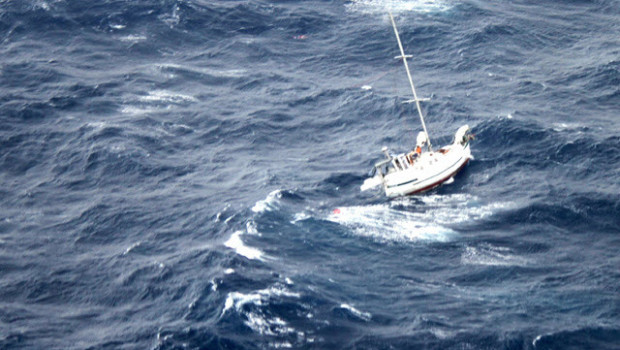Bilge Pumps: No One Is Using Common Sense
Published on August 18th, 2015
by Donald Street
As Mark Pillsbury of Cruising World once said of me in an editorial, “I would rather try to pull a pit bull off a mail man’s leg than to get Donald Street to change a topic that he feels is an affront to good seamanship.”
I have been on to the subject of inadequate bilge pumps and the fact that none of the clubs that organize offshore races enforce the ISAF safety regulations in regard to bilge pumps. My mission began about 30 years ago, and I am still on the project of trying to convince the organizing clubs to enforce the ISAF safety regulations in regard to bilge pumps.
There was a time in our sailing’s history when skippers could save their boats when stricken with a leak. However, it now seems more common for sailors to utilize their electronics for rescue, thus abandoning perfectly good boats due to the inability to thwart water ingress.
At the 2013 and 2014 Safety at Sea Seminars in Annapolis, they did a comparative test on various standard bilge pumps.
The 10 gpm pumps would pump to 10 gpm but you had to work hard to achieve the rated capacity. People wondered how long the pumper would last pumping 10 gpm, and people also realized 10 gallons is not much water.
It was also learned that the double acting 30gpm diaphragm pump did produce 30 gpm but to do it required 60 strokes per minute. Again, people wondered how long they could keep up 60 strokes a minute. Additionally, the double acting pumps have small intake and discharge valves, making them susceptible to clogs, and can jam open, both requiring opening the pump and clearing the valves.
The stand-out performer was the single acting 30 gpm Edson diaphragm pump, which pumped the 30 gpm with no great effort.
All the great clubs that run the offshore races – CCA, Storm Trysail, RORC, Transpac, Cruising Club of Australia – state that entrants must comply with the ISAF safety regulations. However, the inspectors/scrutineers for the various clubs do NOT enforce ISAF regulations which state that pumps must:
“BE OF A SIZE TYPE AND CAPACITY SUITABLE AND ADEQUATE FOR THE INTENDED USE AND SIZE OF THE BOAT”
I have discussed this subject off and on over the last thirty years with Alan Green, former Secretary of the RORC and longtime member of the ISAF safety committee. Each time I discuss with him the inadequacy of the standard bilge pump arrangement and the ISAF regulation, Alan states that “the regulation is sufficient if designers, builders, owners, race inspectors/scrutineers use common sense.”
Agreed, but NO ONE IS USING COMMON SENSE!!!!!
How can any designer, builder, sailor, or safety inspector for offshore races and transoceanic rallies regard two 10 gpm pumps as adequate bilge pumps for boats 40 feet and above that are going to be subject to severe weather with limited rescue solutions?
I hope everyone tests their own boat. Pull a transducer or speed gauge. On a boat with a decent sized bilge, let the boat fill up to the floor boards, or on very shoal bodied boats with no sump, fill the boat to 6-inches above the floor boards.
Then close the transducer or speed gauge and time how long it takes to pump the bilge dry with the standard manual pumps supplied by the builder. Also, consider how well your pump will work when heeled over as I can guarantee it won’t be level when you are in an emergency.
Unfortunately there is nearly no regulations for pumps. British Lloyds, Norwegian Bureau Veritas, USCG, the boat building associations of the US, UK or EU, or organizations such as ISAF, RORC, CCA, Transpac, Cruising Club of Australia specify the size of manual bilge pumps that should be on boats of various sizes. Only German Lloyds specifies size, stating that a 40-foot boat should have a 27gpm pump.
An internet search reveals that only very few manual options pump 27gpm or close to that figure. One is the single acting Edson diaphragm 30gpm pump which made its rated capacity in the tests done in the Annapolis Safety at Sea Seminar this year.
In light of all this, I am comfortable saying how the vast majority of boats sailing today are not compliant with ISAF safety regulation regarding bilge pumps. If the offshore race safety scrutineers were doing their job, we’d all have a better chance for boats to reside in harbors and not become headlines.
Editor’s note: Donald Street is the real deal, having swallowed more salt water than most of us will ever sail on. His vast sailing experience, combined with his professional experience in the insurance industry, makes his an authority on safety equipment such as bilge pumps. Additional information at his website.










 We’ll keep your information safe.
We’ll keep your information safe.